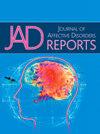Differences in bipolar disorder type I and type II exposed to childhood trauma: A retrospective cohort study
Q3 Psychology
引用次数: 0
Abstract
Background
Childhood trauma (CT) exposure is associated with a more pernicious course in bipolar disorder (BD). However, few studies have reported differences between BD I and BD II regarding CT exposure. We explore the differences in the CT trajectories in bipolar disorders.
Methods
A retrospective cohort study of individuals with BD (BD I = 73 vs BD II = 73) was carried out. Early age at onset (EAO) and suicide ideation/behavior were used as severity outcomes. Timespan between EAO and treatment was documented and the associations between CT and comorbid alcohol used disorder (AUD), anxiety disorders (AD), and post-traumatic stress disorder (PTSD) were also described. Univariate, bivariate analyses, and a Poisson regression model with bootstrap resampling were used.
Results
Higher scores of CT, physical abuse (PA), and sexual abuse (SA) were statistically significant for BD II than BD I (p < 0.001, p = 0.048, p < 0.001, respectively). Early age at onset, suicide ideation/behavior and treatment delay were associated with CT in both BD I and BD II. However, AUD and PTSD showed association with CT only for BD I.
Limitations
Sample size, non-comparison control group, and recall bias.
Conclusions
There are differences in CT subtype exposure between BD I and BD II with regards to early age onset, suicide ideation/behavior, delayed time to treatment, and comorbid mental disorders. These results claim for early access to strategies such as CT exposure screening in individuals with BD to detect possible pernicious course and improve the quality of life and clinical outcomes.
暴露于童年创伤的I型和II型双相情感障碍的差异:一项回顾性队列研究
背景:儿童创伤(CT)暴露与双相情感障碍(BD)更有害的病程有关。然而,很少有研究报道双相障碍I和双相障碍II在CT暴露方面的差异。我们探讨在双相情感障碍的CT轨迹的差异。方法对双相障碍患者(BD I = 73 vs BD II = 73)进行回顾性队列研究。发病年龄早(EAO)和自杀意念/行为作为严重程度结局。记录了EAO和治疗之间的时间跨度,并描述了CT与共病性酒精使用障碍(AUD)、焦虑症(AD)和创伤后应激障碍(PTSD)之间的关系。使用单变量、双变量分析和带自举重采样的泊松回归模型。结果BDⅱ组CT、身体虐待(PA)、性虐待(SA)评分高于BDⅰ组(p <;0.001, p = 0.048, p <;分别为0.001)。发病年龄早、自杀意念/行为和治疗延迟与BD I和BD II的CT相关。然而,AUD和PTSD仅在双相障碍中与CT相关。局限性:样本量、非比较对照组和回忆偏倚。结论双相障碍ⅰ型和双相障碍ⅱ型CT亚型暴露在早发、自杀意念/行为、延迟治疗时间和共病精神障碍等方面存在差异。这些结果要求在双相障碍患者中尽早获得CT暴露筛查等策略,以发现可能的有害过程,并改善生活质量和临床结果。
本文章由计算机程序翻译,如有差异,请以英文原文为准。
求助全文
约1分钟内获得全文
求助全文
来源期刊

Journal of Affective Disorders Reports
Psychology-Clinical Psychology
CiteScore
3.80
自引率
0.00%
发文量
137
审稿时长
134 days
 求助内容:
求助内容: 应助结果提醒方式:
应助结果提醒方式:


